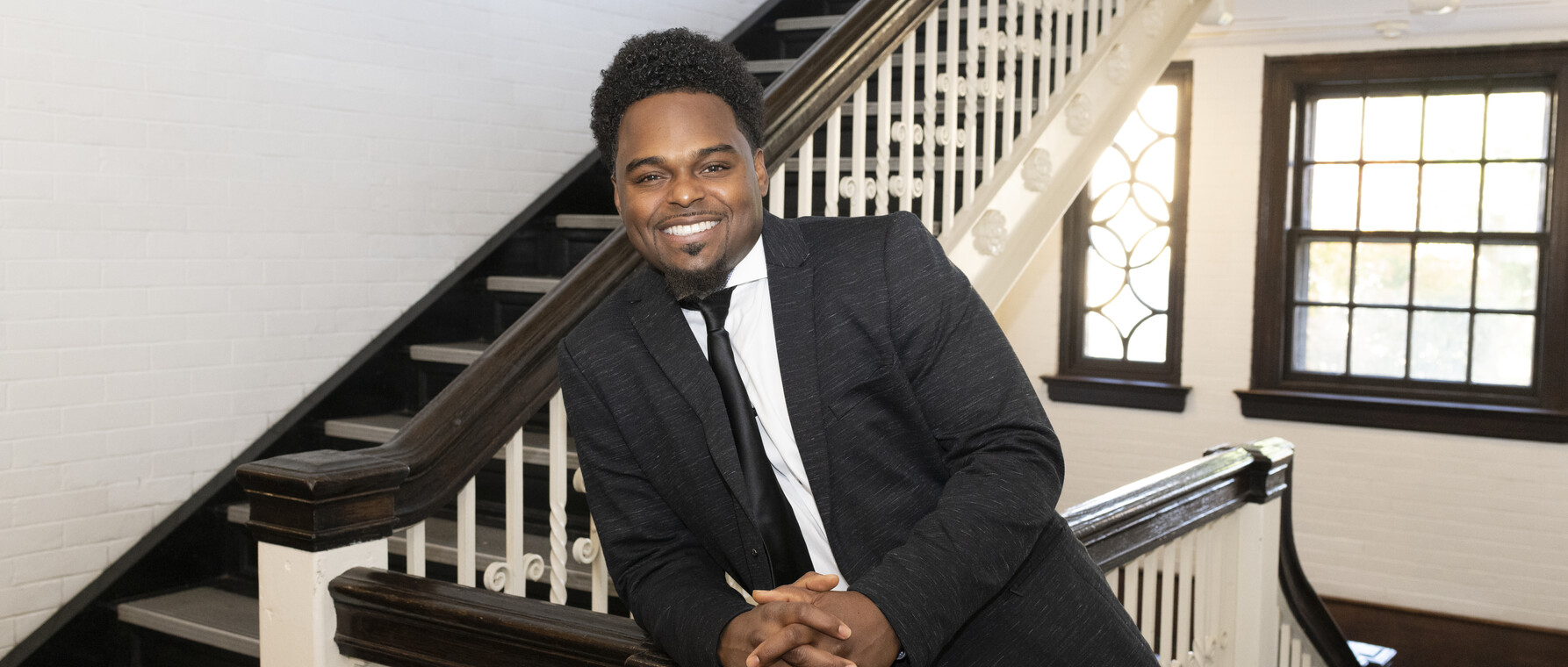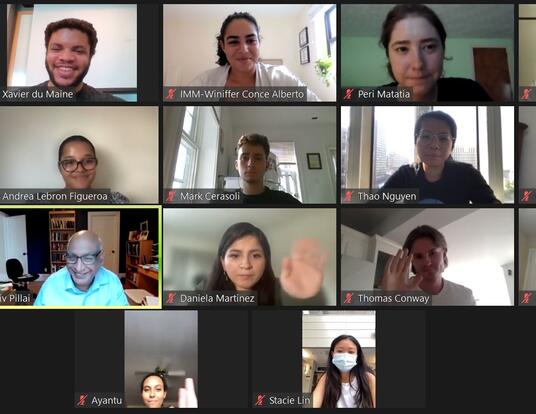Community Connection
How Brandon Woods builds community in the residence halls

Brandon Woods likes people. “I like being around people, I like talking to them,” the PhD candidate in biological and biomedical sciences says. Which is good because, as a resident advisor (RA) and wellness liaison in one of GSAS’s four residence halls, part of Woods’ job is making sure more than 150 residents are healthy and thriving at Harvard. “I’m here to promote holistic self-care among the residence halls and all of their members,” he shares.
The decision to become an RA was an easy one for Woods to make, especially since the community he found at Perkins Hall—where he has lived during his time at Harvard—has been there for him innumerable times. “Living in this environment, I feel connected to other students and that keeps my momentum going,” Woods says. “I interact with students that have experiences similar to my own; for example, I can easily walk out of my room and speak to a neighbor about grant writing or exams,” he explains. For Woods, this energy has facilitated his progress through graduate school and now, as an RA, he’s working to foster that same energy for other residents.
The Cleansing Power of Dance
Growing up in San Diego, Woods developed a deep appreciation for urban dance, particularly locking and hip-hop, which he refers to as his first love. More recently, he has been drawn to one of the lesser-known frontiers of urban dance: house dance. “There’s a strong influence from African and Latin dances in house dance that I value,” Woods says. These influences are inherently connected to West African dances, which give house dance a spiritual aspect that speaks to him. “It means that dance isn’t merely about having a good time but is also equally about being aware and connected to the power of your spirit,” he explains. “After dancing, the music is still playing in my mind, the endorphins are there. It has a cleansing effect.”
It is this cleansing quality that Woods hopes his residents will experience in the house dance classes he is organizing in the residence halls. “As the wellness liaison, I’m bringing in instructors who will not only teach dance but will also speak about how dance has been transformative and restorative to wellness in their own lives,” he explains. For Woods, dance fits perfectly within the realm of wellness, because its benefits are two-fold: spiritual, but also physiological. “Dance is something that supports mental, emotional, and physiological well-being,” he explains.
Beyond dance, Woods also wants to ensure his residents know about all the resources available to them on campus. “Sometimes new students don’t know that there is a Center for Wellness here at Harvard,” he says. He also plans on bringing in instructors to talk about the benefits of meditation. “My intent is to introduce a well-rounded set of resources that will appeal to the diverse residence hall community,” he says.
Dance, however, will be the foundation of Woods’ wellness initiatives as an RA. “I believe that dance, and the arts in general, are a creative outlet that can restore and create balance within graduate life,” he explains. By bringing house dance classes to Harvard, Woods will also be breaking new ground on campus. “Salsa, ballroom dancing, and hip-hop have always been popular,” Woods says. “But house has been the underground jewel of urban dance, so it’ll be nice to bring some light to it.”
Synaptic Remodeling
One of the advantages of being an RA, according to Woods, is that academics are still a priority. As Woods puts it, “Lab always comes first.”
Woods is based in the lab of Professor Davie Van Vactor, who studies synaptic plasticity, wherein synapses, the points of connection between neurons, strengthen or weaken. Woods explains that as you take in information through learning, this information is stored in neural circuits, which are sets of neurons that are connected to one another through synapses. This incoming information is specifically stored through the strengthening and weakening of these connections, and Woods’ main research interest is understanding how this plasticity is mediated at a genetic level. He is particularly looking at the role of microRNAs, small regulatory RNAs that control protein expression, in synaptic remodeling.
According to Woods, one of the interesting aspects of microRNAs is that they can perform their regulatory function outside of the cell’s nucleus. “This means they have access to the synaptic compartment, which holds the machinery for neural transmission and can regulate protein expression locally,” Woods explains. “We’re interested in how microRNAs contribute to synaptic remodeling, and at what steps in this process they are required.”
Woods did not expect to find himself working on what he describes as the nuts and bolts of neural cell biology when he arrived at Harvard. “I was more interested in translation,” he confesses. The big picture ideas of his research, such as how synaptic remodeling can go awry and cause disease, still motivate him but graduate school has given him an appreciation for basic research and an understanding of how successful translational research depends on a sound understanding of cell biology. “What I now appreciate is that you actually need basic principles to translate in order to do translational work,” Woods says.
Photo by Molly Akin
Get the Latest Updates
Join Our Newsletter
Subscribe to Colloquy Podcast
Simplecast





